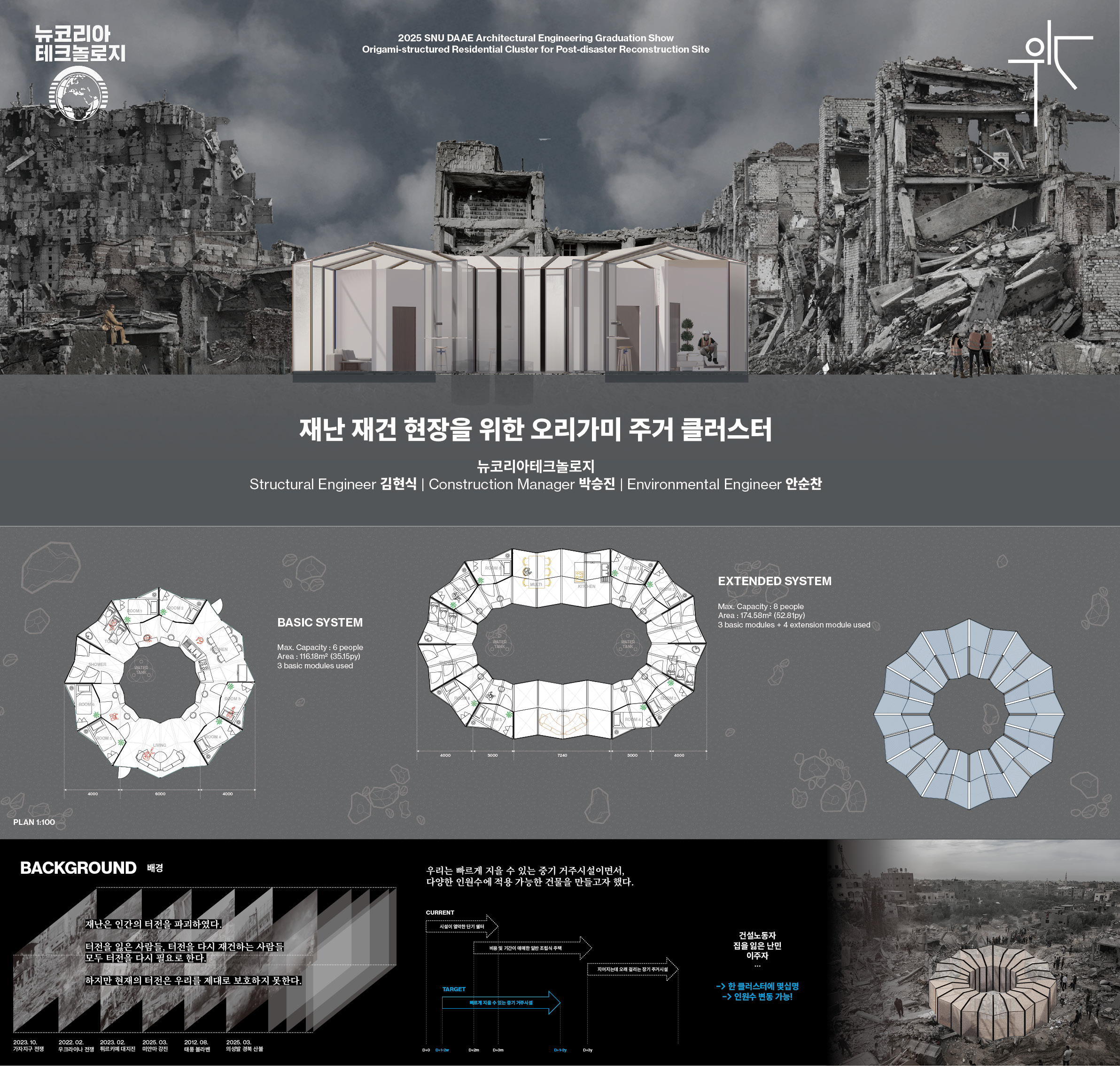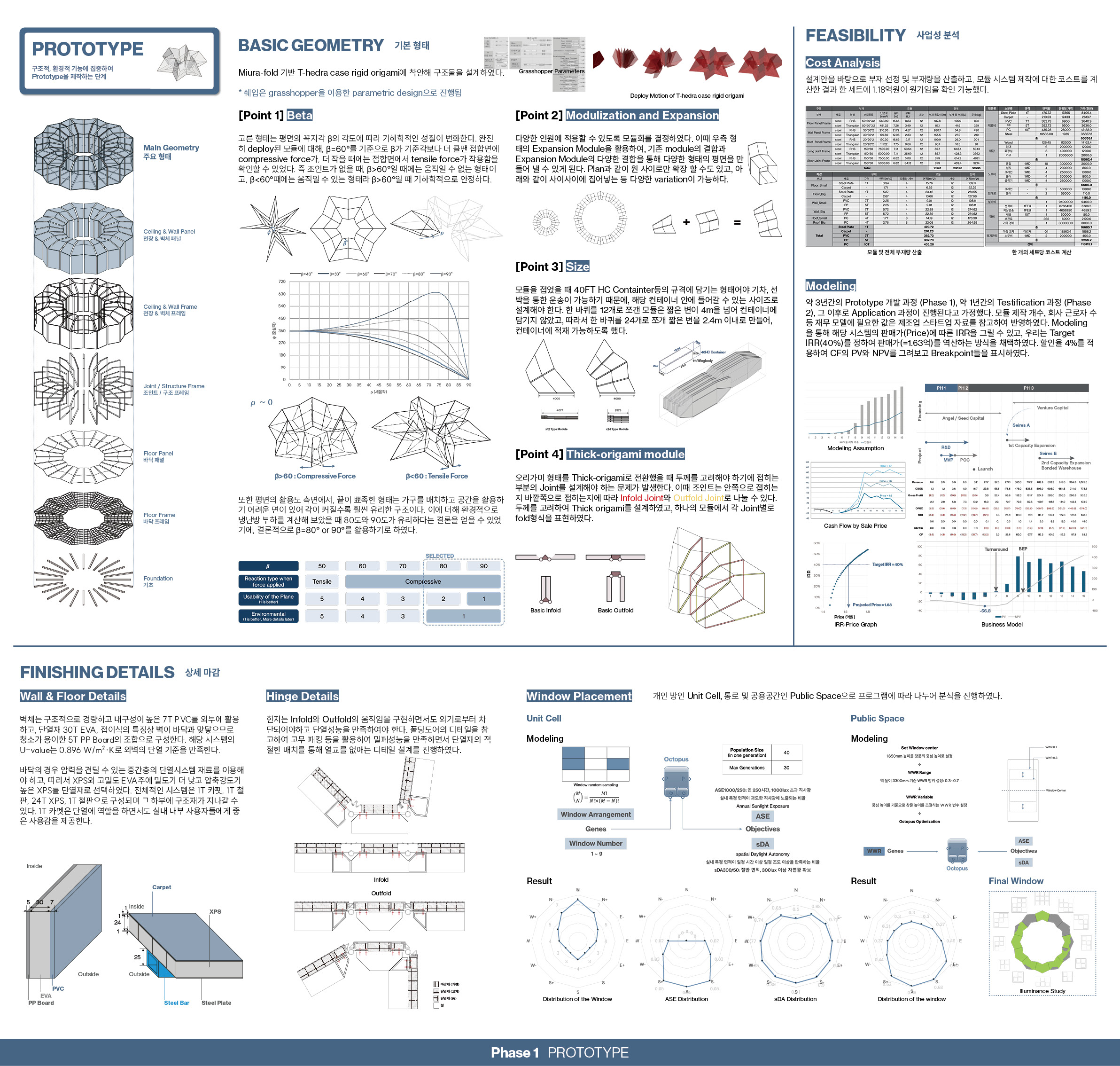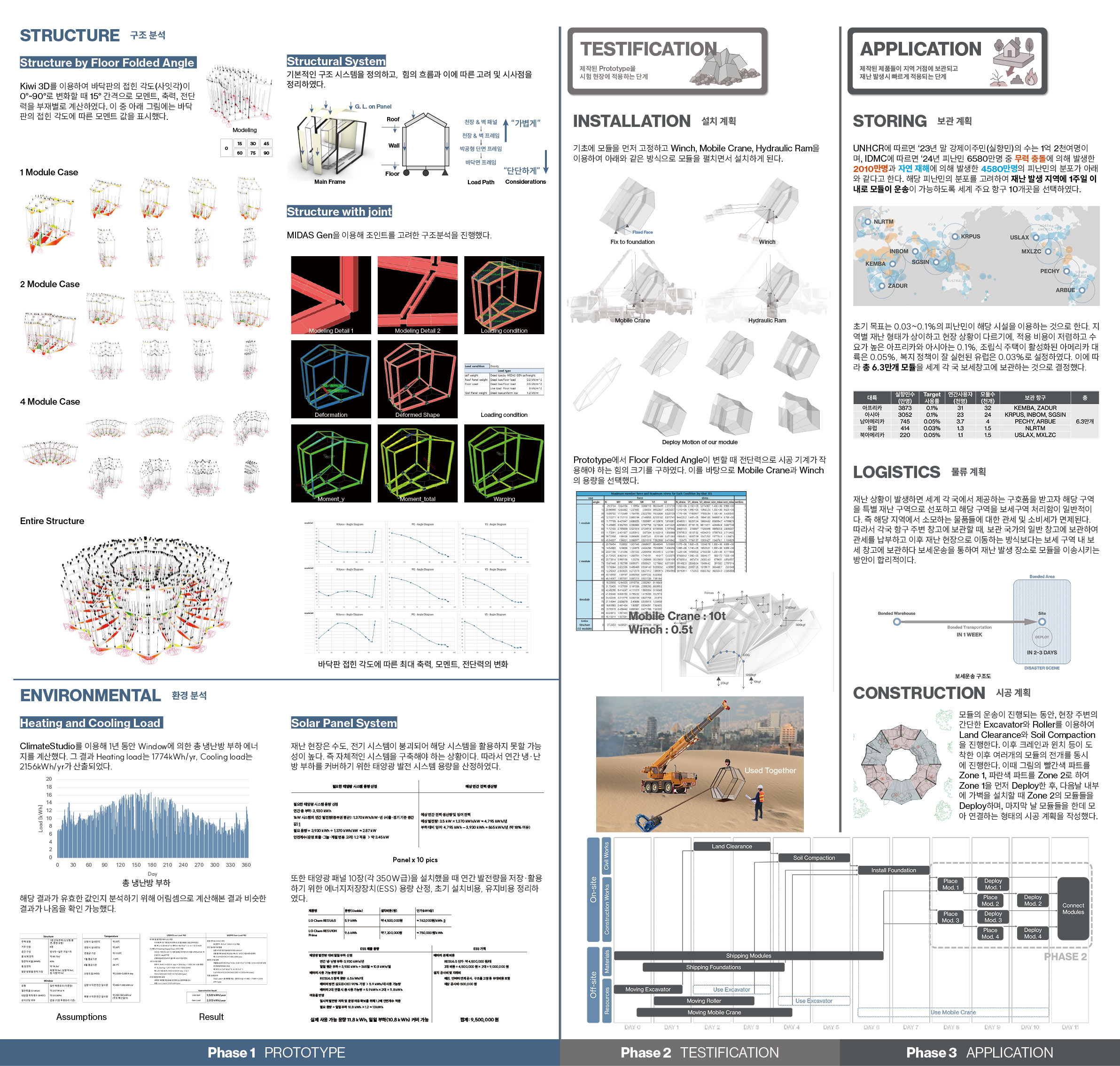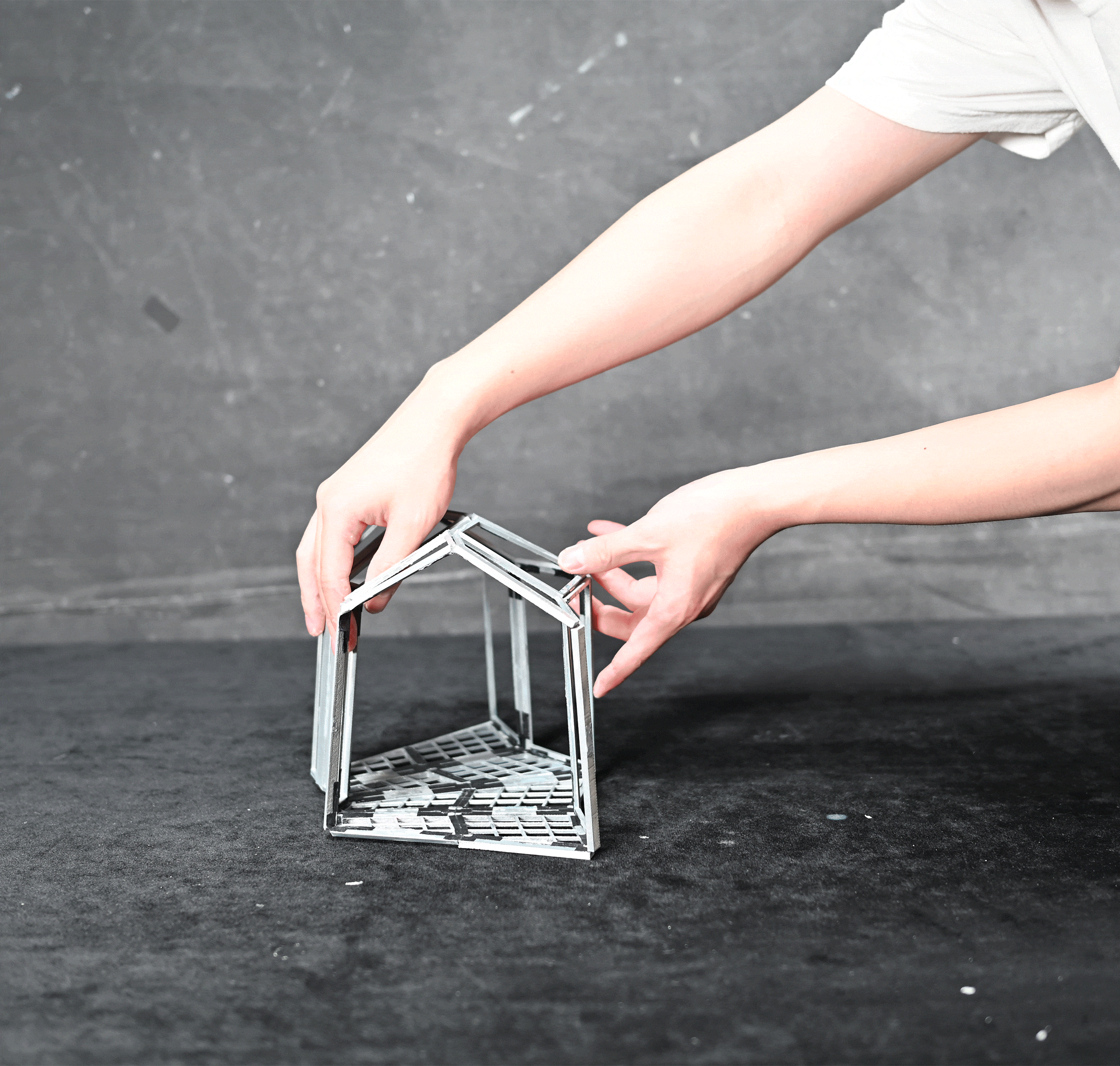뉴코리아테크놀로지 (김현식, 박승진, 안순찬) _ 재난 재건 현장을 위한 오리가미 주거 클러스터
본 프로젝트는 오리가미 구조를 활용하여 전쟁 및 재난 상황에서 쉘터의 기능을 하는 주거 구조물을 개발하는 것을 목표로 한다.
현대 사회에서 가자지구 분쟁, 우크라이나 전쟁, 경남 산불 등과 같은 다양한 재난 상황 속에서 건설 노동자, 난민, 이주자 등 취약 계층은 제대로 보호받지 못하고 있다. 기존의 쉘터는 단기용일 경우 열악한 임시 시설에 그치며, 장기 주거 시설은 건설 기간이 오래 걸린다는 문제점이 있다.
이러한 문제에 대한 대안으로, 본 프로젝트에서는 신속한 시공이 가능하면서도 장기간 사용이 가능한 주거 구조물을 제시한다. 그리고 이를 실현하기 위한 구조적 해법으로 ‘오리가미 구조’를 제안한다. 오리가미 구조, 소위 종이접기 구조는 부재의 접힘에 의해 전체적인 구조적 형상이 가변적인 구조이다. 이러한 특성을 활용하면, 오리가미 구조물이 접혔을 때 그 부피를 최소화하여 시공현장까지의 간편하고 신속한 운반을 가능하게 하고, 펼쳐졌을 때는 부피를 확장하여 내부에 건축적인 공간을 형성할 수 있다는 장점이 있다. 추가로 이러한 구조는 시공 현장에서 복잡한 건설 과정을 거치지 않고도, 오리가미 구조의 전개와 모듈 조립만으로 설치가 가능하다는 점에서 실질적인 이점을 제공한다.
이번 프로젝트에서는 Miura fold 기반의 T-hedra case rigid origami 구조에서 착안한 오리가미 구조물을 설계하였다. 가장 먼저 단단하고 두께가 있는 부재를 활용한 Rigid Origami 구조의 형성 방법에 대해 고민한다. 또한 각 부재 사이의 접힘을 가능하게 하기 위해 힌지 조인트를 설계하고, 전체 구조에서 각각의 부재와 조인트 주변에 작용하는 응력을 분석함으로써 구조적 안정성을 검토하였다. 또한, 구조물 내부에서 거주하는 인원의 쾌적함을 유지하기 위해 최적화된 창문 배치를 설계하고 특수 상황에서 냉난방 부하를 줄여 자급률을 확보했다. 마지막으로 이러한 사업의 타당성을 검토하고자 사업성 분석을 진행하고, 해당 모듈들의 설치를 위한 시공 및 물류 계획을 수립하였다.
This project aims to develop a residential shelter cluster that functions as a shelter in war and disaster situations by utilizing origami-based structural systems.
In contemporary society, vulnerable populations such as construction workers, refugees, and migrants are often left unprotected in various disaster contexts (including the Gaza conflict, the war in Ukraine, and wildfires in Gyeongnam). Existing shelters tend to be poor-quality temporary facilities when intended for short-term use, while long-term housing solutions often suffer from prolonged construction periods.
As an alternative to these issues, this project proposes a residential structure that is both rapidly deployable and suitable for long-term use. To realize this, a structural solution based on origami structures is introduced. Origami structures—also known as foldable structures—are characterized by foldable members that allow the overall form to be variable. By folding this property, the volume of the structure can be minimized during transport to the site, allowing for fast and easy logistics. Once deployed, the structure expands to form habitable architectural space. Furthermore, this system eliminates the need for complex on-site construction processes; it can be assembled simply by unfolding the origami structure and connecting prefabricated modules, offering a practical advantage.
For this project, an origami structure inspired by the T-hedra case rigid origami based on Miura fold was designed. The process began with the challenge of forming a rigid origami structure using thick and solid members. Hinge joints were then designed to enable folding between members, and the structural stability was verified by analyzing the stress distribution on each member and around the joints. To enhance indoor comfort for inhabitants, optimized window placement was designed, and strategies were implemented to reduce heating and cooling loads under extreme conditions, thereby improving energy self-sufficiency. Finally, a feasibility analysis of the proposed system was conducted, along with a construction and logistics plan for the installation of these modular units.




